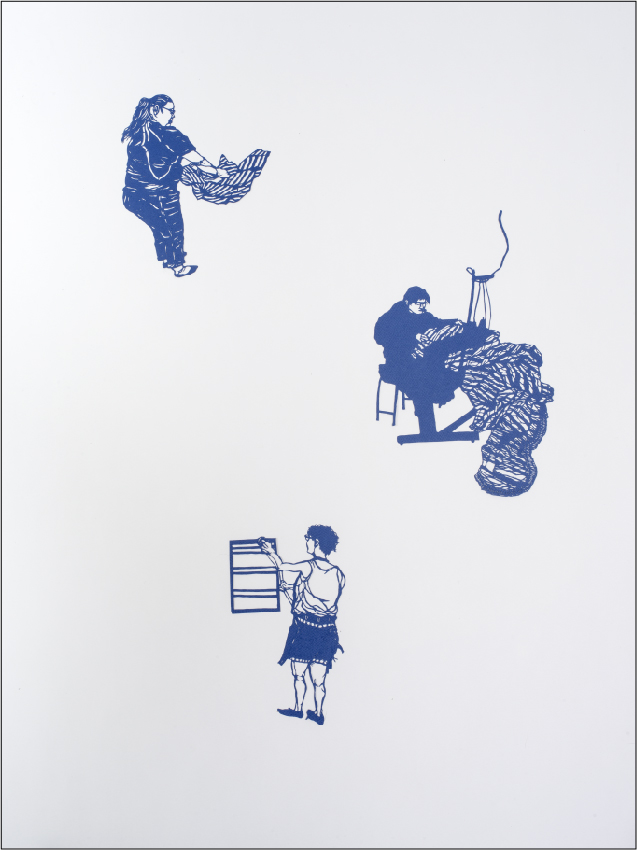Title Image: Butterfly and plum blossom (2012) Paper. 28 x 59 cm.

Portraits of textile workers from South-East Queensland and Central China.

The Threadbare series consists of both portraits of textile workers and still lifes of the fabrics they produce. The textile industry has mobilised populations since its inception during the mid-18th Century in Europe. In contemporary China, the manufacture of clothing remains an avenue for people to transition from rural to cosmopolitan areas of residence. In Australia, the textile industry remains heavily reliant on the labour of migrant workers.
The practice of adorning textiles with motifs of significance exists in many cultures to both imbue the wearer with good fortune and to symbolise his or her status within a community. For instance, traditional garments for young girls in China are made using plum blossom brocade. This is a symbol for feminine beauty. Chrysanthemum is also a symbol for longevity and is often embedded into manchester.
Several of the textiles in this series have Breton stripes. The motif was appropriate from French sailors and elevated to Haute Couture by Coco Chanel during the early 20th Century. Subsequently, I present these compositions as symbolic of the breaking down of social barriers. I am interested in how these motifs reflect aspirations of both the people fabricating textiles and those that buy and wear the garments.